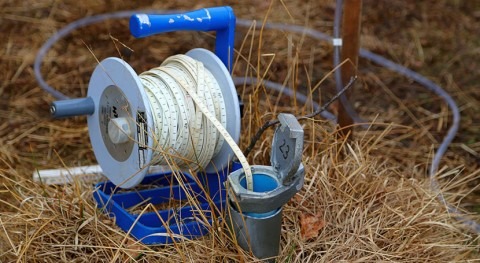We left the offices and started our short field tour. I thought that we would just take a walk but the terrain was challenging besides the possibility of encountering hippos in the vicinity. So we drove around the ‘ponds’ as they are called. They were sizeable and extended over a wide expanse of land. This was no luxury tour. It was a visit to the wastewater treatment plant outside Nairobi in a neighborhood called Ruai. This plant served Nairobi City and part of its suburbs. Over 160 cubic metres of wastewater are pumped into this plant daily…160 cubic metres translates to 160,000 litres.
If an average American household uses 1000 litres per day, recovery of water from this wastewater could supply 160 upper middle class households with water daily. Now, before you start vilifying me for thinking of supplying respectable families with suspect water, let’s just remember that wastewater is waste + water. What if we could isolate the water from the waste for reuse? And here I’m just considering making the water reusable in irrigation and in industry…
What if we could recover some of the resources that are hidden in this wastewater:
- The agricultural nutrients crucial for farming;
- The algae possibly useful for energy;
- Useful microbes which could prove useful in industry;
- Possibly energy from wastewater itself!
All I’m saying is that the potential wastewater carries is unimaginable. It’s a resource we cannot see go to waste.But to put theory to practise, how do we go about achieving all this?
Agriculture
Wastewater teems with considerable amounts of agricultural nutrients. Picture vegetables grown besides sewage or industrial effluent… Though this happens especially in suburban areas, it has the potential of compromising the health of many. As these crops take up nutrients, they may also suck up pollutants and harmful microorganisms However, several technologies to remove agricultural nutrients have been tested successfully at research scale. All they are waiting for are innovators willing to pick them up and apply them commercially. A very promising one is the use of algae. Algae thrive in water contaminated with agricultural nutrients. If they could be allowed to grow, harvested then dried for reuse in farming, it could open up a whole arena for Innovations. But algae don’t only grow in polluted waters. They accumulate a decent amount of fats in their plant-like structures making them good candidates for extraction of bio oils.
Energy
At research level, extraction of oils from algae looks promising.vHowever, there are some practical challenges such as efficiency of the process. Quite a sizeable amount of algae are required to generate a small amount of bio oils and this has discouraged some big players from this market. However, what about SMEs and start ups? Generating some fuel from waste matter could be one sure way of starting the journey to success. It’s easier said than done but it’s worth the try because the start up capital needs are low. But wastewater just doesn’t carry useful stuff in it. We might be so preoccupied with the content until we forget the value of the container:
Water
Recovering water from wastewater might require investment in some chemical, biological and engineering knowledge. But it’s worth the effort because of the water scarcity many developing nations face. Today, our region of Eastern Africa is facing a crippling drought which affecting many pastoralists households due to livestock deaths. Also, food scarcity in arable areas is a reality to reckon with. If nations like Kenya are to become food secure in the near future, then the use of irrigation in agriculture is a must. However, with the drying up of rivers, lakes and dams, what recourse do we have? One is to recover water from unconventional water resources such as wastewater. If 160,000 litres of water flow through the Nairobi wastewater treatment plant in a day, how much would flow in a month? (A little bit of math…) This would translate to 4.8 million litres of water on a monthly basis. If 480 litres could be used to produce 0.45kg of maize, then 4.8 million litres could produce 4500kg of maize. This means that if water could be recovered from one wastewater treatment plant and rechannelled to irrigation, it could help us yield 4.5 extra tonnes of maize per month!
Remember that we’ve not factored in other wastewater treatment plants and wastage of water through other channels. And recovery of water this way is possible because it is being done in nations such as Namibia. In short, our food shortage problems could be solved by looking at wastewater differently. This way, we wouldn’t need to benefit hippos alone when treating it. We could save lives by providing food for our fellow citizens in the process.






